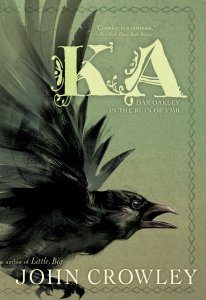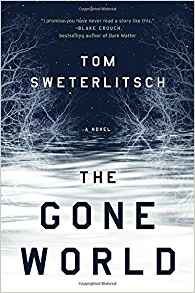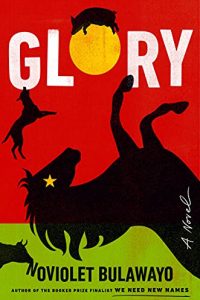Gary K. Wolfe reviews Ka: Dar Oakley in the Ruin of Ymr by John Crowley
Ka: Dar Oakley in the Ruin of Ymr, John Crowley (Saga 978-1-4814-9559-2, $28.99, 464pp, hc) October 2017.
 Toward the end of John Crowley’s astonishing new novel Ka: Dar Oakley in the Ruin of Ymr, the immortal crow of the title asks a Coyote what they have ever got from the humans whose world has encroached upon and finally displaced their own, and the Coyote responds, “Stories…. We’re made of stories now, brother. It’s why we never die even when we do.” Certainly Dar Oakley’s long life is made of stories – not always his own – as is the life of the dying human narrator who ostensibly transcribes and translates his tale – although even this narrator admits to the possibility that “this is only a story I have told myself.” The stories that we tell ourselves, and how they define us, have been abiding concerns in Crowley’s fiction, and his first full-scale return to fantasy since completing his Aegypt sequence a decade ago explores the idea in complex and elegant ways, and with some of the most beautiful prose that Crowley, always a master stylist, has yet produced. It’s partly a novel about the discovery of consciousness, partly about the discovery of language, partly about the discovery of time, and in no small part about the discovery of story.
Toward the end of John Crowley’s astonishing new novel Ka: Dar Oakley in the Ruin of Ymr, the immortal crow of the title asks a Coyote what they have ever got from the humans whose world has encroached upon and finally displaced their own, and the Coyote responds, “Stories…. We’re made of stories now, brother. It’s why we never die even when we do.” Certainly Dar Oakley’s long life is made of stories – not always his own – as is the life of the dying human narrator who ostensibly transcribes and translates his tale – although even this narrator admits to the possibility that “this is only a story I have told myself.” The stories that we tell ourselves, and how they define us, have been abiding concerns in Crowley’s fiction, and his first full-scale return to fantasy since completing his Aegypt sequence a decade ago explores the idea in complex and elegant ways, and with some of the most beautiful prose that Crowley, always a master stylist, has yet produced. It’s partly a novel about the discovery of consciousness, partly about the discovery of language, partly about the discovery of time, and in no small part about the discovery of story.
Animal stories are a risky business. When they work, it’s almost in spite of themselves; the tendency to anthropomorphize or allegorize bunnies, toads, mice, bears, moles, or entire barnyards can get pretty grating very quickly. But as Olaf Stapledon realized as long ago as Sirius and as Ursula K. Le Guin realized with her animal stories, they also provide the closest opportunity we have at hand to imagine an alien intelligence. For Dar Oakley and his fellow crows, dogs and wolves are “carcass openers,” since they provide opportunities for fresh food – they’re sort of First Responders in the tooth-and-claw world – while humans are a puzzle, killing but not eating each other and leaving behind much of what they do eat. Dar Oakley’s tale begins in ancient Europe, when crows first encounter the human world, which they call Ymr (the world of crows is called Ka). Witnessing the aftermath of a brutal battle between two warring tribes, the crows realize that humans can provide them with untold riches in the form of carrion, and thus the crows “joined the history of People, and their own history began.” Dar Oakley’s own long history with People begins when he learns to talk with a couple of humans, a shamanistic figure called the Singer and a young girl called Fox Cap (because when he first meets her she wears a foxhead as a cap), who gives him his name, Dar of the Oak by the Lea. They are the first of a series of allies that Dar Oakley finds in the human world. Later, in what appears to be the Middle Ages, he befriends a monk simply called Brother – who gets in a fair amount of trouble because of his consorting with a crow – and still later, after he makes his way to the New World through a series of fabulously unlikely adventures, he falls in with a young man called One Ear (so-called because of a mutilation suffered when he is captured as a child by the rival tribe called the Crow clan, and then is later raised by the clan as one of their own) – but, like Dar Oakley himself, he is always something of an outsider. Throughout, Dar Oakley finds himself aligned with the outsiders in the human communities he visits – not too surprising, since even today claiming to talk with a crow would earn more than a few sideways glances.
All these humans grow old and die, of course, but Dar Oakley repeatedly returns to the human world, even when he himself faces death a few times. Eventually the narrative takes us through the American Civil War, where he meets an Emily Dickinson-like poet named Anna Kuhn and later her son, who becomes a famous crow-hunter. He witnesses the urbanization of America, which creates so many sources of sustenance that crows no longer need to fly south in winter, and finally sees the growing decay of human civilization, which gives the novel its subtitle and its absolutely stunning opening line: “There has come to be a great mountain at the end of the world.” That mountain, we soon realize, is made of waste, yet another gold mine for the crows that feed on it. Finally, Dar Oakley befriends the narrator, whose wife Debra has recently died of one of the “new diseases” and who himself suffers from another. It seems important to keep in mind that the narrator’s own elegiac story, revealed in bits throughout the novel, actually contains Dar Oakley’s entire narrative, and the narrator repeatedly calls into question his own reliability – which is a way of calling our attention to the sheer story-ness of Dar Oakley’s account.
There is much more to this rich and complex novel than I can begin to describe here, and as original as Crowley’s approach is, parts of it reflect familiar fantasy tropes: Fox Cap, for example, discovers that after she returns from the forest where she sought her stolen cap, years have passed in the village, in good fairytale form. She also accompanies Dar Oakley on an otherworldly journey, and later Dar Oakley himself visits the underworld, Orpheus-like, to bring back the love of his life, a crow named Na Cherry. Other animals figure into the narrative – ravens, owls, a coyote – in ways that suggest a kind of hierarchy of hermetic knowledge involving the intersection of different worlds, another favorite theme of Crowley’s. Covering thousands of years of human history, Ka: Dar Oakley in the Ruin of Ymr may seem at times more like a chronicle than a tale, but the tales within it, from Dar Oakley’s own love stories, to his acerbically distanced view of human development, to the nearly self-contained tales of figures like Fox Cap, the Brother, Anna Kuhn, and the narrator himself, recapitulate its central themes of death, survival, and the value of story in ways that are as haunting and provocative as anything Crowley – or almost anyone else in the last several years – has written. It may be some sort of masterpiece.
This review and more like it in the October 2017 issue of Locus.






